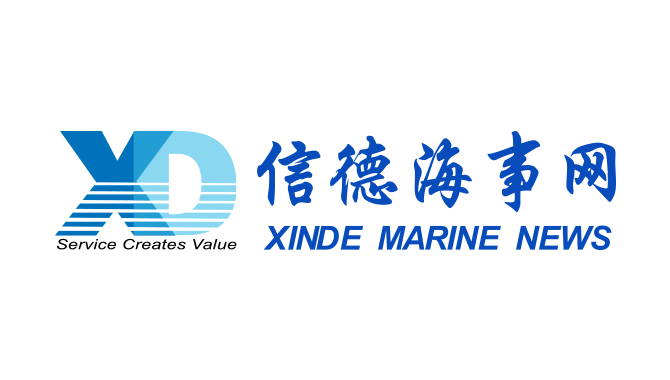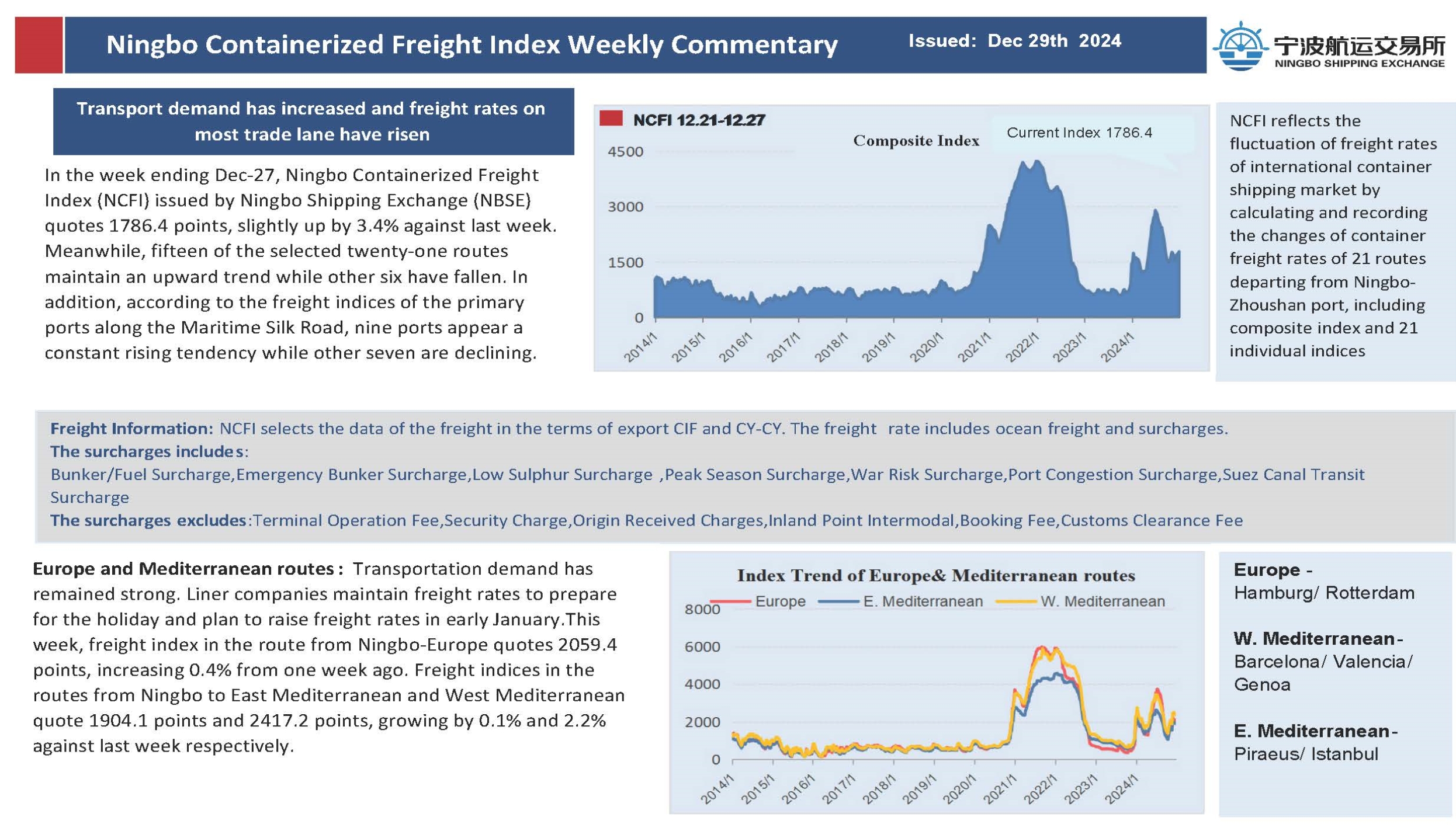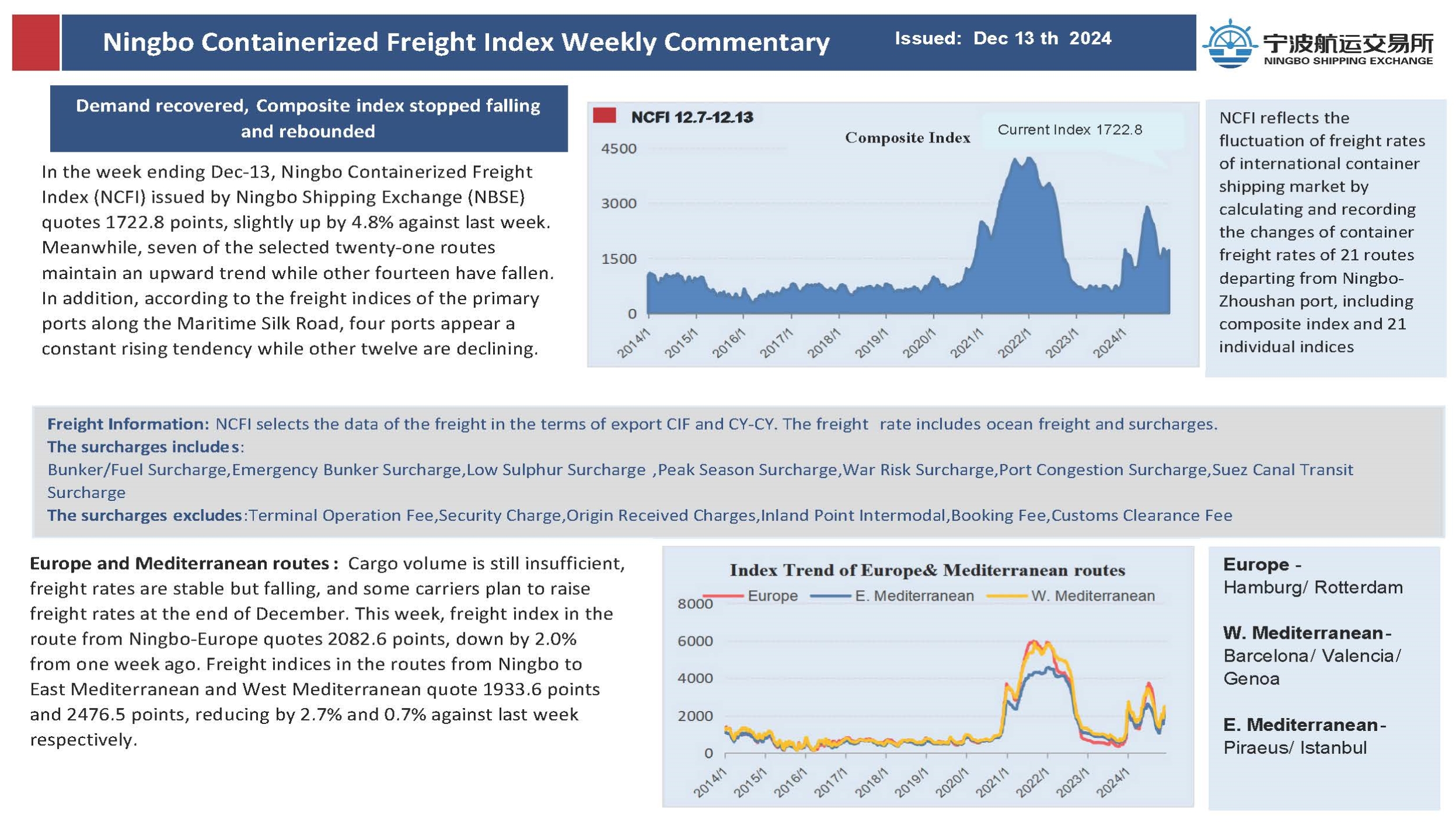
Container shipping demand remains strong heading into the fourth quarter. Ongoing COVID-19 flare-up however continues to present challenges across Asia Pacific, with Vietnam extending the lockdown in its manufacturing heartland around Ho Chi Minh City until mid-September, New Zealand imposing national lockdown and China suspending aircraft operations in Shanghai International Airport. The unprecedented disruption caused by the pandemic coupled with surging demand is affecting schedule reliability at a much lower level than we expect.
This month, we share the latest market trend before highlighting the issues and challenges we face, and we also explain Maersk's latest solutions to help you keep cargo moving.
Market Trend
Market Trend
Container demand growth continued to run ahead of supply growth in Q2 2021. The combination of strong US goods consumption, higher throughput capacity and re-opening in Europe are expected to drive average year-on-year container demand growth at around 2%-4% for the second half of 2021.
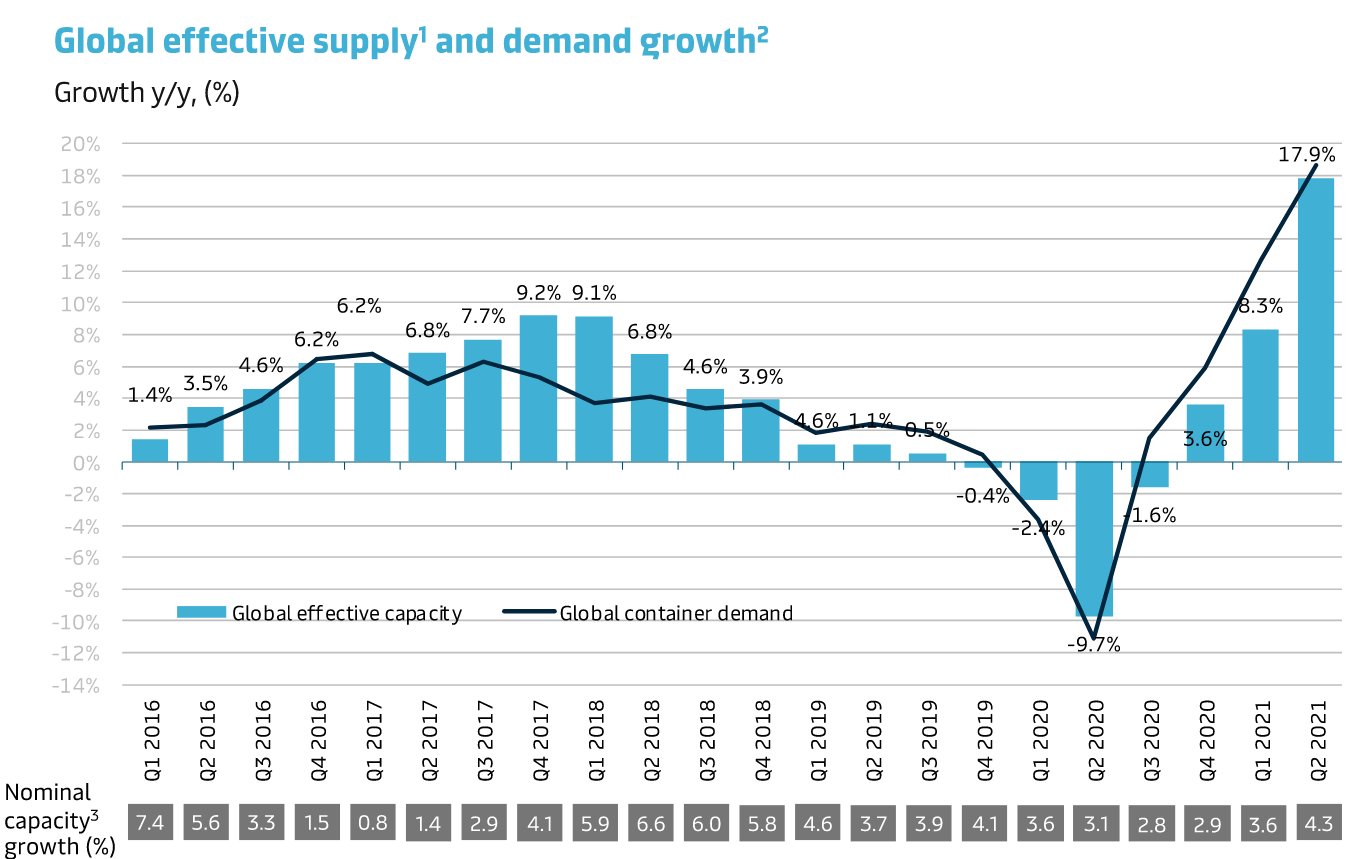 ( Note: 1. Effective capacity incorporates changes to idling, vessel speed, average length of trade and container network. 2. Q2 2021 is Maersk internal estimates where actual data is not available yet. 3. Global nominal capacity is deliveries minus scrapping. Source: Alphaliner, Maersk. )
( Note: 1. Effective capacity incorporates changes to idling, vessel speed, average length of trade and container network. 2. Q2 2021 is Maersk internal estimates where actual data is not available yet. 3. Global nominal capacity is deliveries minus scrapping. Source: Alphaliner, Maersk. )
 ( Note: 1. Effective capacity incorporates changes to idling, vessel speed, average length of trade and container network. 2. Q2 2021 is Maersk internal estimates where actual data is not available yet. 3. Global nominal capacity is deliveries minus scrapping. Source: Alphaliner, Maersk. )
( Note: 1. Effective capacity incorporates changes to idling, vessel speed, average length of trade and container network. 2. Q2 2021 is Maersk internal estimates where actual data is not available yet. 3. Global nominal capacity is deliveries minus scrapping. Source: Alphaliner, Maersk. )
The global composite purchasing managers' index hit 56.6 in June 2021 driven by expansion in both the manufacturing and services sectors. The manufacturing orders to inventories index hit the highest level in June since 2010 indicating continued restocking, while the export orders index also climbed to 53.2 in June, the highest since 2010.
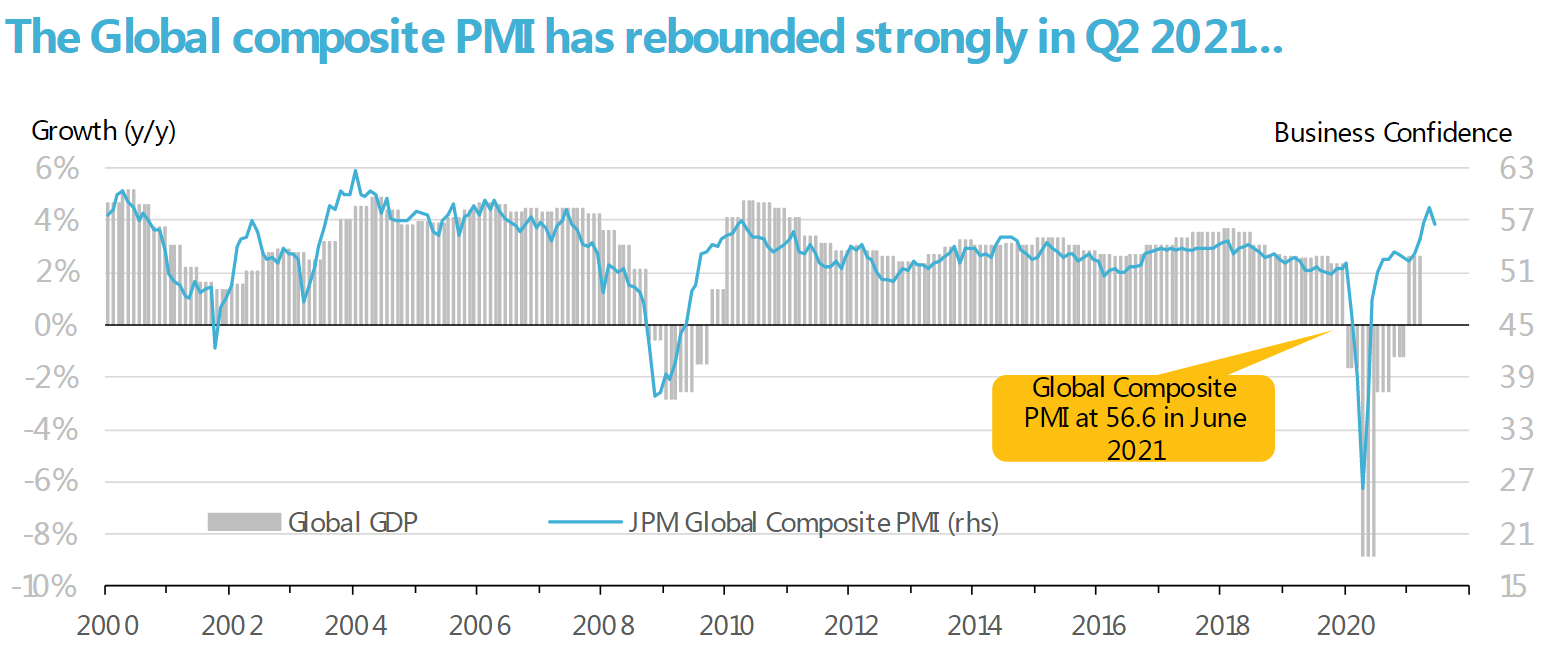
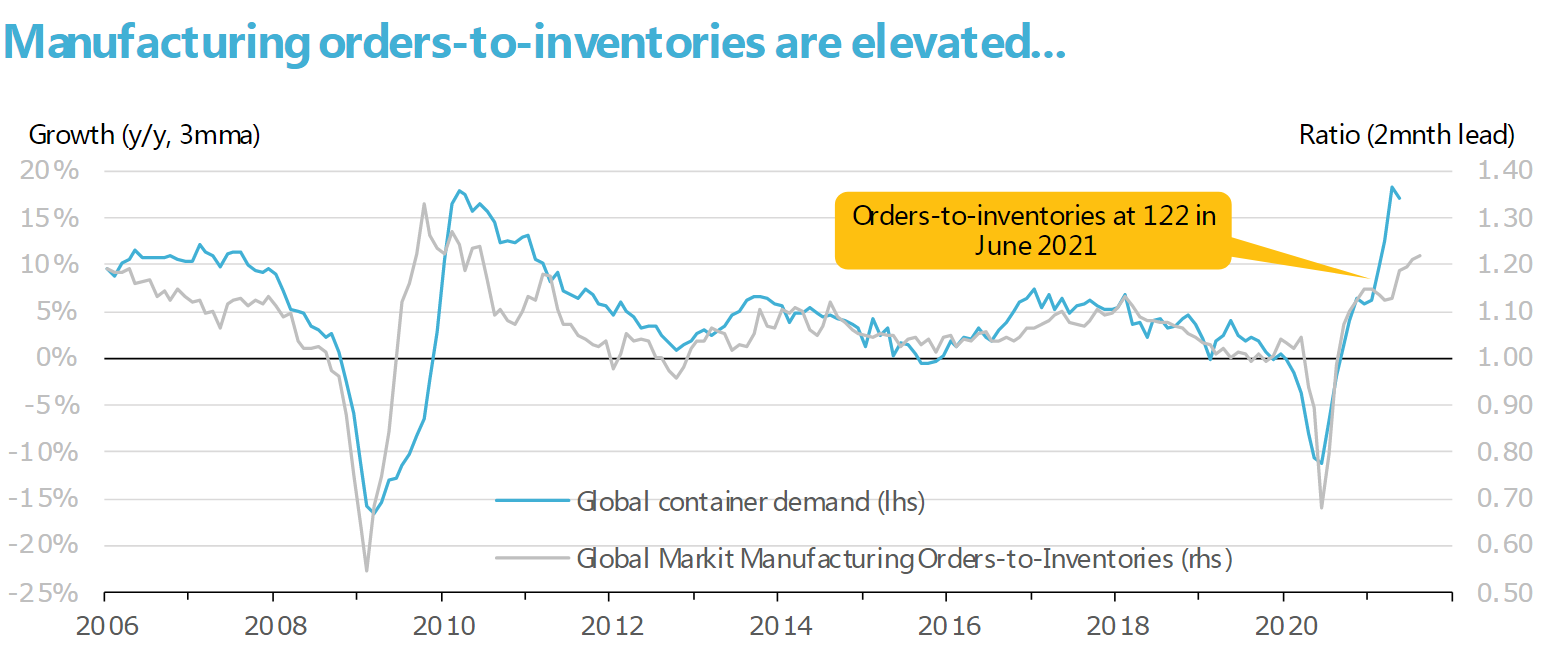
( Note: In the lower right hand chart a two-month lead is assumed from the orders-to-inventories ratio to output growth. Source: Oxford Economics, IHS Markit, Refinitiv and Maersk Strategy Calculations. )
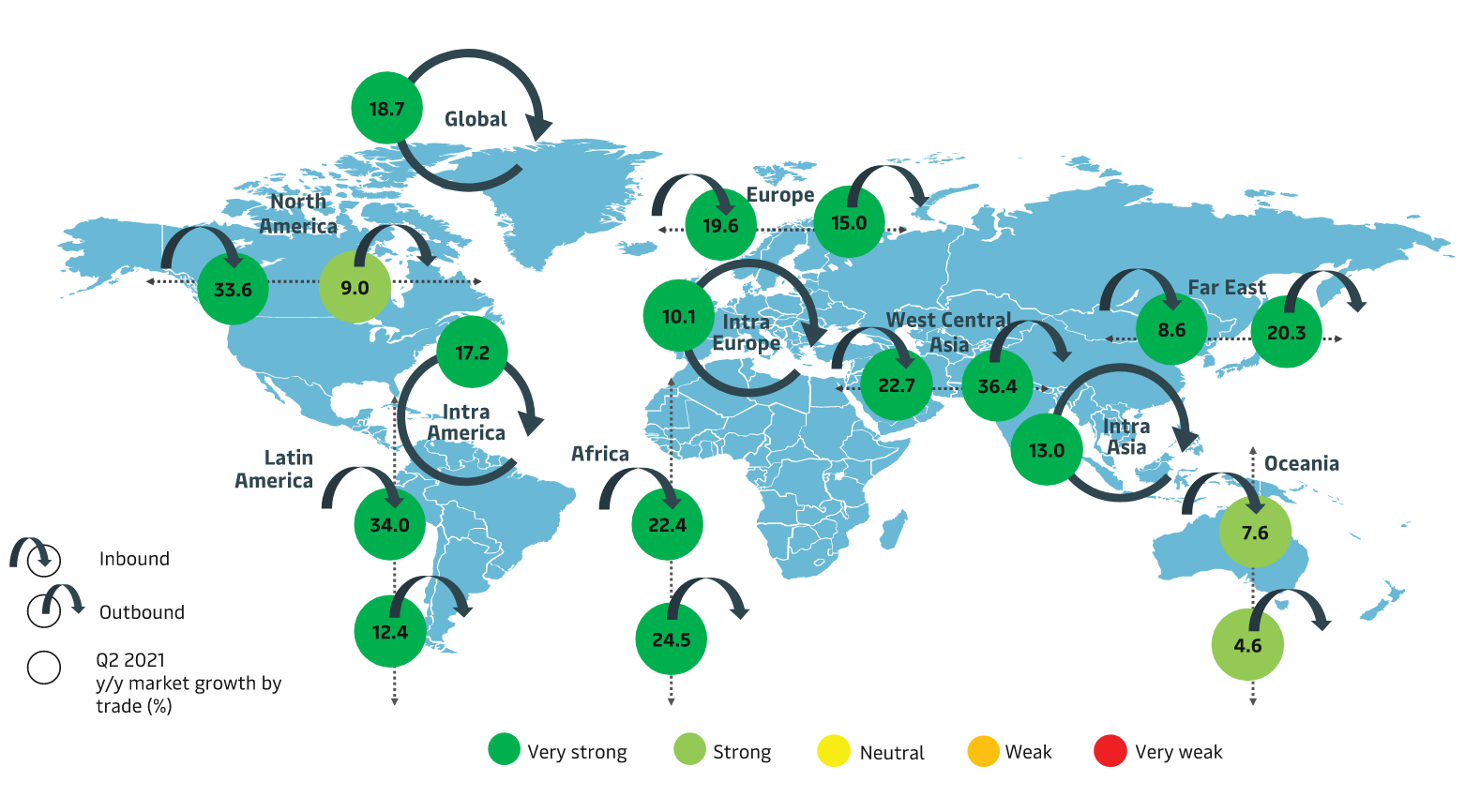
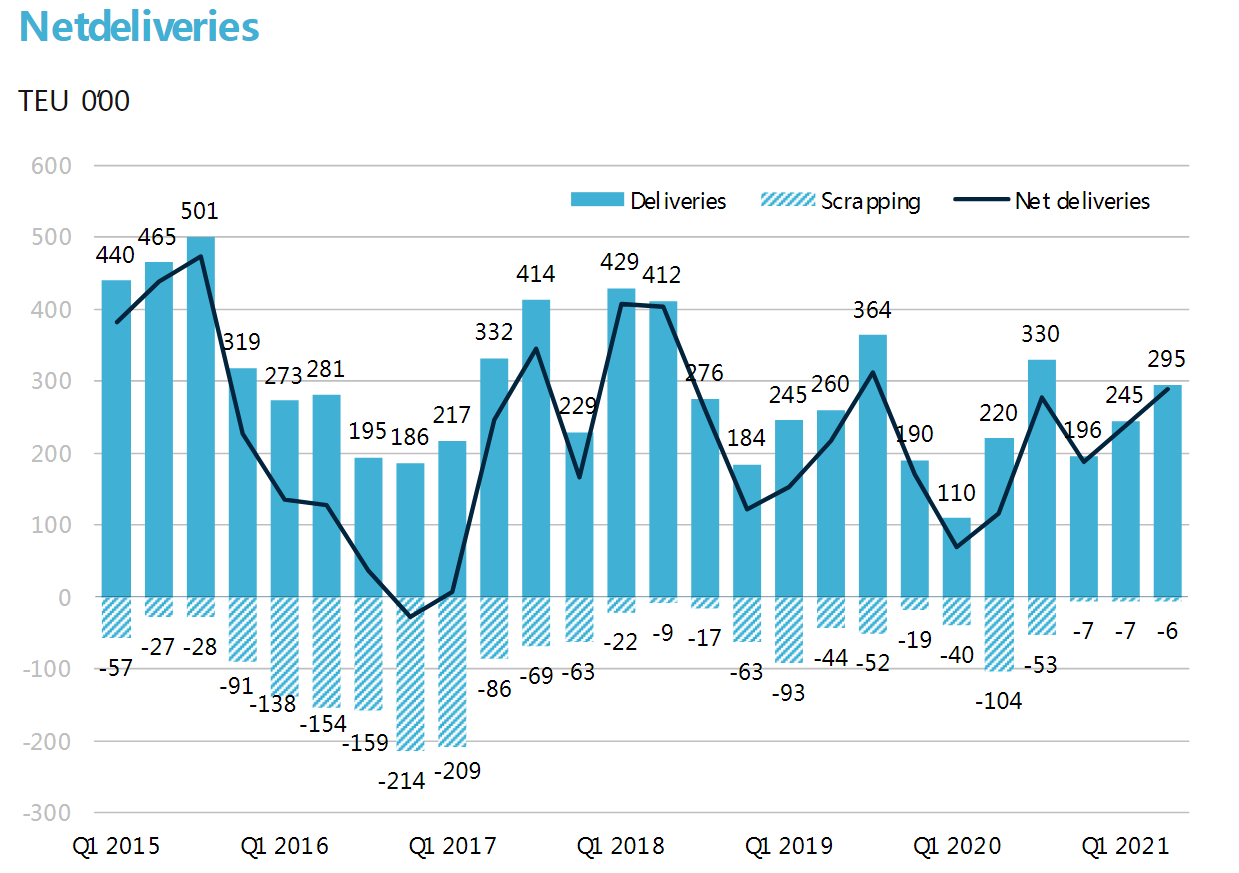
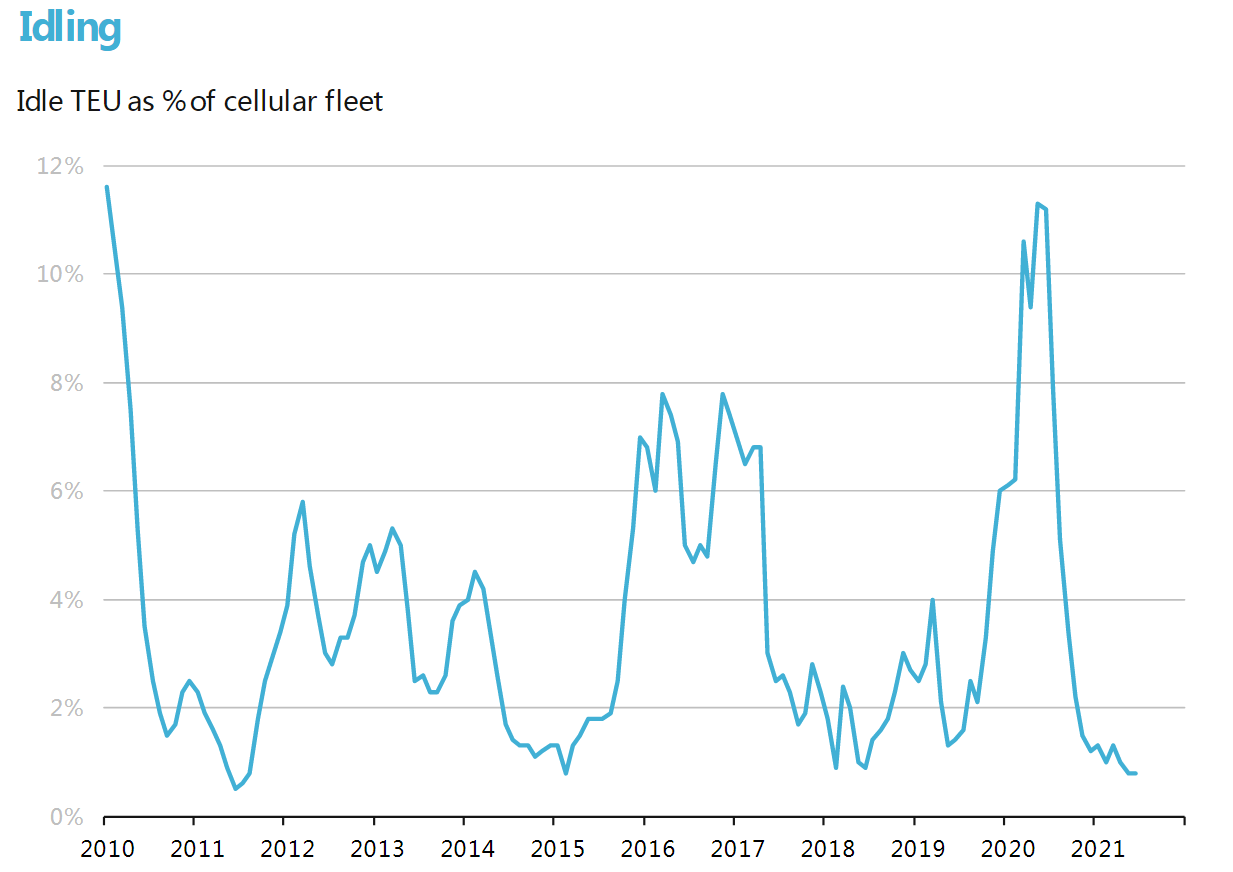


( Note: In the lower right hand chart a two-month lead is assumed from the orders-to-inventories ratio to output growth. Source: Oxford Economics, IHS Markit, Refinitiv and Maersk Strategy Calculations. )



Trending Topics
COVID-19 flare-ups across Asia Pacific are causing operational challenges.
A persistent COVID-19 flare-up across the southern provinces of Vietnam is creating havoc for supply chain with trucker shortages and factory closures exacerbating terminal congestion. Lockdowns in southern Vietnam’s manufacturing heartland, imposed from 26th of July, have been extended until 15th of September. Saigon Newport said no calls have been omitted at the deep-water container terminal at Cai Mep, which handles long-haul services. A Saigon Newport survey showed 66.5% of manufacturers around Ho Chi Minh City have halted production. Some factories may start to re-open towards the end of August, while those that have remained open have cut production capacity to 50-70% largely due to resource constraints and a government requirement that factories provide live-in arrangements during the entire lockdown period.
Maersk operated warehouses in Vietnam have operated with minimal disruption, but with strict COVID-19 preventative measures in place. Truck drivers need negative COVID-19 test certificates to transport cargo to depots and ports. Vessel sailings have seen some departure delays. Empty container availability across northern provinces remains extremely tight. Severe equipment shortages are expected in the coming weeks in the Southern provinces as factories start to reopen and manufacturing starts to ramp up.
New Zealand has imposed an Alert Leve 4 national lockdown from 17th of August until 11.59pm 27th August, with Auckland exceptionally extending to 11.59pm 31st August. Import cargo movements are allowed under strict social distancing and health and safety standards, while the production and packing of non-essential export products are restricted impacting supply chain movements. In Australia, due to increased COVID-cases, New South Wales lockdown has been extended until end of September and Victoria lockdown extended to 11.59pm 2nd September. Classified as essential services, transport and logistics activities are operated normally with strengthened health and safety standards. All governments have advised these current restrictions will be reviewed as close to the day prior with an update on moving forward provided.
Local Authorities have suspended aircraft operations in Shanghai Pudong International Airport since August 20 till further notice due to new COVID-19 cases. Many airlines have cancelled the flights to Pudong Airport pending further instructions. Maersk is closely monitoring the situation at other airports across China. We do foresee delays and longer transit times are likely to occur. We will continue to work closely with you to minimize the impact to your supply chain and keep you informed as the situation develops. Please stay updated through this page here.
According to Ningbo Meishan Island International Container Terminal (MSICT) announcement, operation of container gate-in and gate-out has been suspended from 11th Aug. 2M vessels mainly call Beilun Terminal Phase 4 in Ningbo port where there is waiting time of 3 days but is otherwise operating normally. Maersk has a VSA service AC6 (Asia- South America) at MSICT and all AC6 vessels in August will omit Ningbo. Your supply chain is always our top priority. For the most relevant and up-to-date information, please use this page here.
The new wave of COVID cases in Thailand and Malaysia are also causing challenges for airfreight capacity and operational efficiency especially on trucking manpower and crane operators.
Keep your business moving during COVID-19 with our flexible alternatives
You might be facing supply chain constraints due to COVID-19 disruptions. Maersk can offer agile and flexible logistics solutions such as airfreight and intercontinental rail service to keep your cargo moving during this challenging period.
Keep your business moving during COVID-19 with our flexible alternatives
You might be facing supply chain constraints due to COVID-19 disruptions. Maersk can offer agile and flexible logistics solutions such as airfreight and intercontinental rail service to keep your cargo moving during this challenging period.
Maersk intercontinental rail offers a competitive end-to-end solution for cargo moving from Asia to Europe, combining reliability, sustainability and speed to market, which is quicker than ocean at a substantially lower cost than air freight. We have launched the first dedicated block train between Hanoi, Vietnam and Leige, Belgium for Decathlon. The train, which left Hanoi on 21 July 2021, is due to arrive in Europe by the end of August carrying 23 40-foot containers destined for Dourges and Rouvignies in France. The service is twice a week from September. “This first block train from Vietnam to Europe for Decathlon will not only achieve reliable lead times, but also provide our customer with improved visibility,” says Philippe Dunand, Global Account Director for Decathlon at Maersk. Click here to learn more.
Global schedule reliability has been largely consistent in the past few months, albeit at a much lower level than we expect.
Schedule reliability has fallen dramatically in 2021 driven by various factors, particularly by stronger-than-expected demand, operational disruptions and continued port congestions. Maersk has continued to maintain its industry leading position for schedule reliability, according to the latest Sea-Intelligence Global Liner Performance Report in June, however schedule reliability for the industry as a whole remains much lower than we expect. We fully acknowledge that we are still far away from achieving the reliability levels that our customers expect from us and we have been continuously working to add vessels to absorb delays, rationalize service coverages and collaborate with terminals to minimize the impact.
Global schedule reliability has been largely consistent in the past few months, albeit at a much lower level than we expect.
Schedule reliability has fallen dramatically in 2021 driven by various factors, particularly by stronger-than-expected demand, operational disruptions and continued port congestions. Maersk has continued to maintain its industry leading position for schedule reliability, according to the latest Sea-Intelligence Global Liner Performance Report in June, however schedule reliability for the industry as a whole remains much lower than we expect. We fully acknowledge that we are still far away from achieving the reliability levels that our customers expect from us and we have been continuously working to add vessels to absorb delays, rationalize service coverages and collaborate with terminals to minimize the impact.
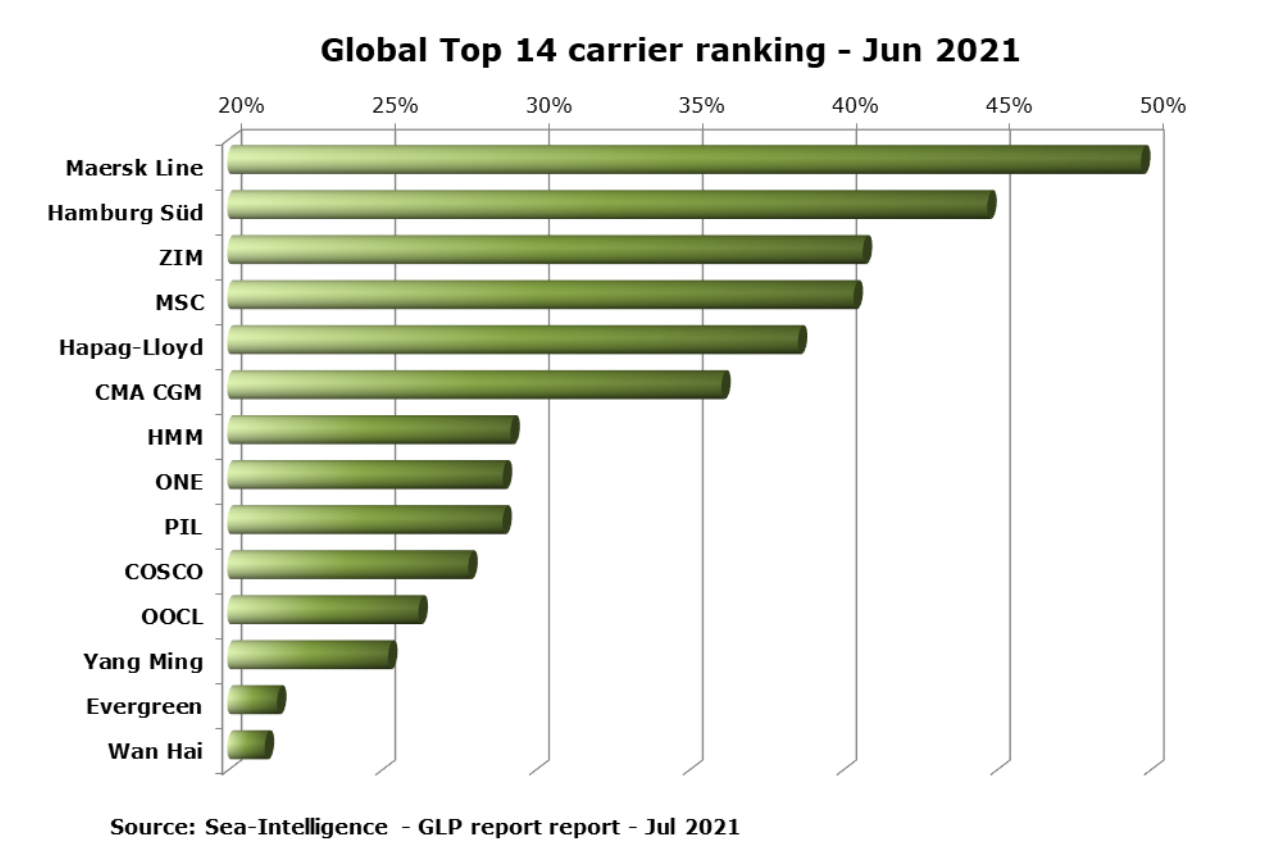
Ocean Update
The shortage of empty containers remains an industry-wide challenge across Asia. Strong demand, production bottlenecks and lockdowns have led to congestion across the supply chain. The equipment supply is imbalanced across Asia. Dry containers 20' and 40' are in short for China, Vietnam, Cambodia and Indonesia, but manageable for the rest of Asia. Maersk has added 40’ high cube containers into our fleet through the summer to support our customers’ export requirements and reposition the empty containers. Pls see below for the latest equipment forecast for main loading ports in Asia. (Note: The equipment forecast is based on the supply and demand forecast, any increase in demand or supply delay would cause an earlier supply gap)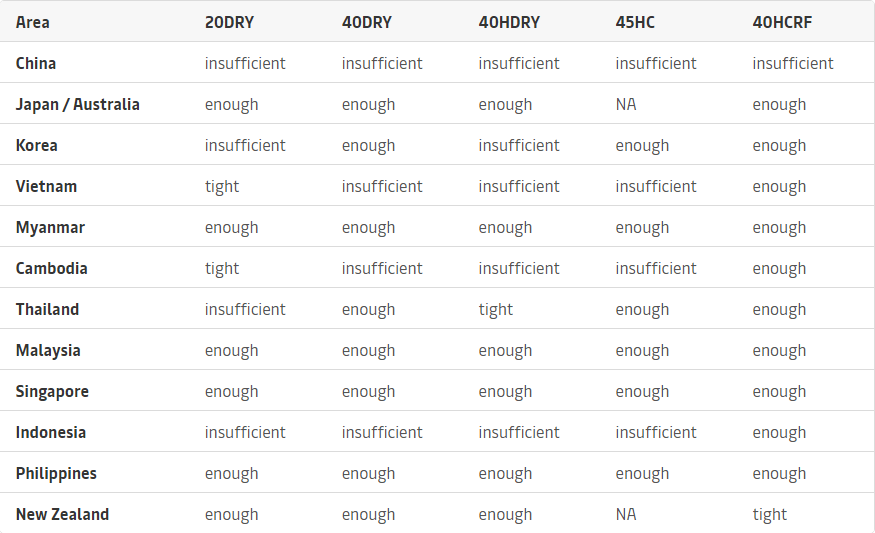

Key updates for trade lanes. We expect the ocean network across all trades to continue to be fully utilized as export demand remains strong. We are omitting ports on selected services to improve schedule reliability and are offering SOC (shipper owner container) and NOR (Non-Operating Reefer) services to mitigate the impact of equipment shortages.
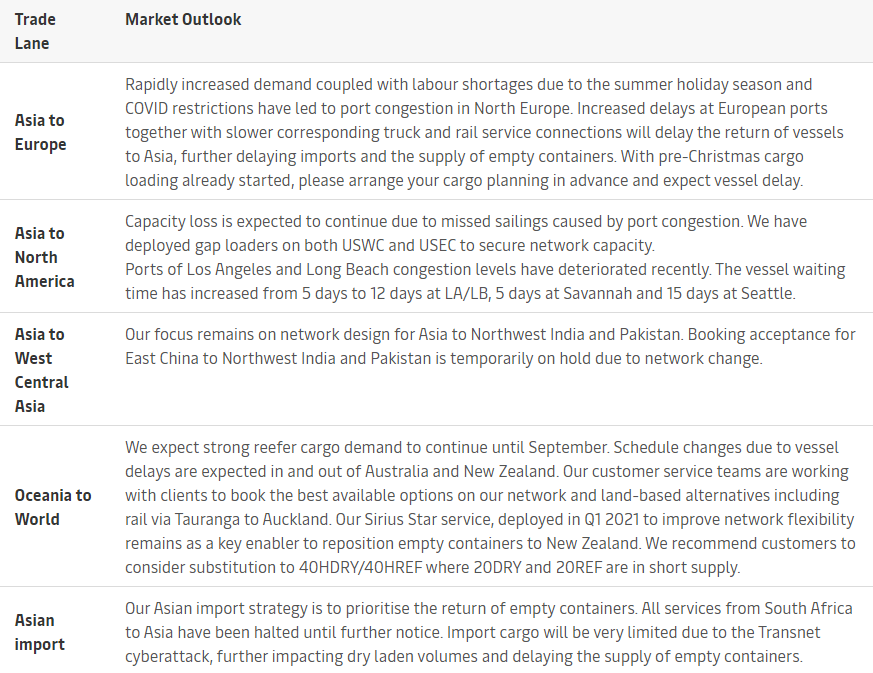
Airfreight Update
Regional market outlook for Asia: We continue to see industries converting ocean bookings to airfreight to catch up with product requirements or restock inventories. A surge in demand for hi-tech products is expected in late August and early September, with strong peak volume growth mainly to Europe and North America. The current COVID-19 flare-ups across Asia will impact capacity particularly for transpacific eastbound and southeast Asia and Australia. However, some freighter capacity will recover from late August as aircraft are returned to service from annual maintenance. The U.S. Department of Transportation has told U.S. carriers that charter opportunities between the U.S. and China Zone 1 cities are limited to 75 one-way charter flights from August 1, 2021 to July 31, 2022. Shanghai, Beijing and Guangzhou are classified as China Zone 1 cities. This will move capacity to smaller airports in middle and west China.
Greater China: Due to recent COVID-19 cases in Nanjing airport and Shanghai Pudong International Airport, many flights have been cancelled. Tougher prevention measures, especially targeting ground handling staffs and airport terminals, combined with reduced operational efficiency and high demand, are expected to present challenges for the shipping peak season of Halloween, Thanksgiving and Christmas. We are adding capacity and frequency to lessen the impact for our customers.
Australia and New Zealand: With a lack of capacity from China, we see freight costs continue to increase across major trade lanes into Australia and New Zealand. The Trans-Tasman bubble is closed until further notice due to a resurgence of COVID-19 cases. Qantas has cancelled all commercial flights between Australia and New Zealand until the end of September. And we have seen delays of up to 14 days from Australia to New Zealand. Additional capacity is being spread across remaining airlines which service New Zealand until further notice. Export capacity from Australia and New Zealand is managed case by case, based on airline acceptance due to the volatile market conditions.
Japan and Korea: Year on year, Japan air cargo volume during 1H 2021 increased by 27.4% mainly driven by exports from Narita airport, while Korea monthly export volumes increased by 54% and imports increased by 32%. With more passenger flights operated as freighters, air capacity is increasing although the market remains tight.
Vietnam, Cambodia, Myanmar: Export demand in southern Vietnam remains stalled from the impact of COVID-19 although export demand out of North Vietnam, Cambodia and Myanmar is growing across all trades.
Thailand, Malaysia and Singapore: With the new wave of COVID-19, many airlines have reduced frequency or cancelled flights on some routes. We see space will continue to be a challenge for September and especially Q4.
Landside Transportation Update
Regional market outlook for Asia: Strong volume demand across Asia is expected to continue into Q4. Trucking availability, scheduling and capacity are all impacted by trucker shortages and congestion. We continue to introduce extra services to minimize the negative impacts for our customers.
Vietnam, Myanmar, Cambodia: The Intercontinental Rail service from Hanoi, Vietnam to Europe is operating but customers can only book a complete block train (23 FFEs). There is a shortage of empty containers in north Vietnam, so we are offering barge and truck solution from south Vietnam.
Greater China: Equipment supply remains short for the rest of 2021. Operational efficiency, especially in Jiangsu, Anhui and Zhejiang provinces, has been negatively impacted by recent COVID-19 cases, causing trucking congestion especially in east China. We encourage customers to use barge and rail solution as an alternative through Ningbo and Shanghai.
Japan and Korea: We expect strong demand for the Maersk AE19 ocean-rail service to continue for the rest of this year, impacting equipment availability and capacity.
Major ports update (Vessel waiting time indicator)
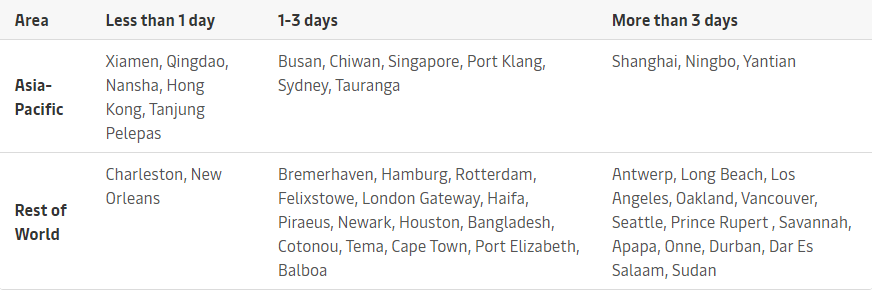
Source: Maersk
The opinions expressed herein are the author's and not necessarily those of The Xinde Marine News.
Please Contact Us at:


